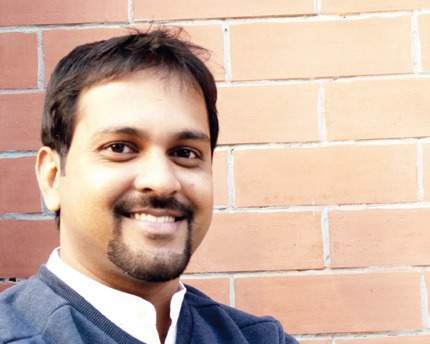
Faced with odds like unemployment, drought and parched lands, households of Kondrahalli village have made this an alternative source of income
On a hot afternoon in March in a sleepy village in Malur taluk of Kolar district, 40-year-old Sathish Kumar discusses his family ‘business’. “I have studied up to SSLC, and now I work as a cook at auspicious functions,” he says. “My younger brother Rajesh, who like me studied up to the class 10, is a cook. My older brother Nagaraj, who is 46-year-old, is also cook,” he keeps on explaining.
Sathish and his brothers are not the only family of cooks in their village. There are 60 households that call Kondrahalli village home, and all but one have taken up cooking to eke out a living. The oldest member of the 60th family that has yet to pick up spatulas, is a retired government school teacher.
There are villages that nurture at least one wrestler in every household. Others take pride in ensuring that one member is a teacher or a government employee.
But this is the story of an entire village whose residents, when faced with unemployment, drought and parched lands, turned to cooking as an alternative source of income.
In Karnataka, Kondrahalli village goes by the moniker ‘Banasigara grama’ (cooks’ village). A majority of the people here are landless and many worked on fields owned by farmers in surrounding villages. But with every passing generation, finding agricultural work and sustaining a livelihood from it was becoming increasingly difficult.
Career change
The struggles of two generations of families served as a catalyst for this career change. “Instead of depending on others and blaming nature, we opted to take up cooking,” says Nagaraj, who holds Bachelor’s degree, but prefers working as cook.
“We are happy with our profession as it feeds our families. It gives us pleasure to feed other people and get paid for his,” Sathish adds.
Most villagers, like Sathish and his brothers, are second-generation cooks having learned the tools of the trade from their fathers.
Only the men cook, and their profession for the most part takes them to Bengaluru and other parts of Karnataka, Andhra Pradesh and Tamil Nadu. Be it marriages, house warming ceremonies, political functions or birthdays, the cooks of Kondrahalli are in demand.
Not all 60 families cook for one event. “An order comes in, and depending on the size of the event, a team of 15 to 20 male cooks will go to the venue,” says a villager, adding that on an average they charge ₹40,000 to ₹60,000, which is then divided up among the cooks. The leader of the team — the person who brings in the order — usually gets takes home ₹4,000-₹5,000; for big assignments he can earn as much as ₹10,000.
“We have experience cooking for even 40,000 people particularly during functions organised by politicians,” says Sathish.
The cooks of Kondrahalli are adept at different cuisines, but their holiges are in great demand, they say. (Holiges, like puran polis, are sweet flat breads with delicious stuffings made from sugar and peanuts to coconuts and tur dal, cooked on a hot girdle with liberal helpings of ghee.) Mysore Paak is another speciality.
Regular contracts
Their fame guarantees them regular contracts from tour operators across north and south India. “None of us have any formal training. Practice makes us good cooks,” says villager Basavaraj, who is of course, a cook. During peak marriage and grihapravesha seasons, the men leave the village to go on “cooking missions”.
“The men folk will be away for months on end working in far-off places like Kuppam, Punganur and Ramasandra in Andhra Pradesh and Alangai, Kaveripatna, Karimangala, Ambur and Baragur in Tamil Nadu,” says Sathish’s sister-in-law, Saritha.
At home, women help with preparatory work. “We prepare masalas on grinding stones when the power goes off,” Saritha adds. But when the men return to Kondrahalli from their missions, it is the women who prepare their food. Some gender roles are hard to break.
source: http://www.thehindu.com / The Hindu / Home> News> States> Karnataka / by Vishwa Kundapura / Kolar – April 29th, 2017





